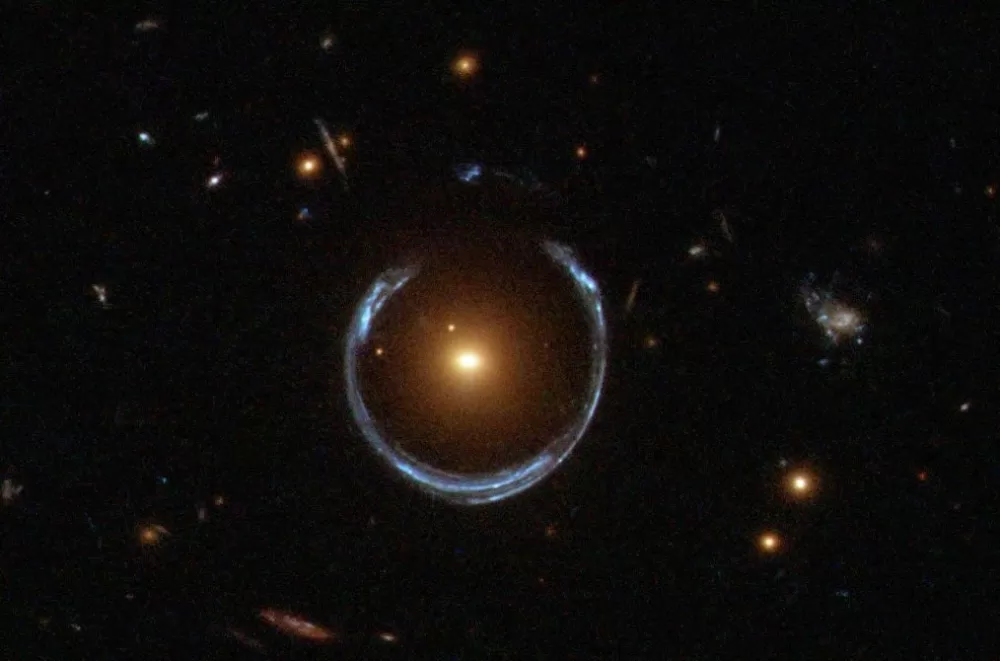Cosmic Mirrors: How AI is Unveiling the Universe's Hidden Lenses
Share- Nishadil
- November 15, 2025
- 0 Comments
- 3 minutes read
- 14 Views

AI Unleashes a Wave of New Quasar Discoveries, Revolutionizing Cosmology
Astronomers are leveraging the power of machine learning to uncover a trove of previously hidden lensed quasars, dramatically accelerating our understanding of the universe's most profound secrets. This AI-driven approach is proving crucial for unlocking insights into dark matter, dark energy, and the cosmic expansion rate.
Imagine, if you will, looking out into the vast, dark expanse of space, seeking something incredibly rare—a cosmic mirage, perhaps. For decades, astronomers have been on the hunt for these elusive phenomena: distant quasars whose light, on its incredible journey across billions of light-years, gets bent and warped by the gravity of massive galaxies sitting squarely in the foreground. These aren't just pretty pictures, mind you; these lensed quasars, sometimes appearing as multiple images of a single cosmic beacon, are profound tools, veritable scientific goldmines for understanding the universe's grandest mysteries.
You see, these shimmering duplicates offer unique insights into dark matter, the mysterious glue holding galaxies together, and dark energy, the even more enigmatic force accelerating the universe's expansion. And, frankly, they help us measure the very pulse of the cosmos—how fast it’s all stretching out, the Hubble constant. But here’s the rub: finding them has always been, well, a monumental pain. It’s like searching for a specific, incredibly rare needle in an infinite, ever-expanding haystack.
Historically, this pursuit was a laborious, human-centric affair. Teams of astronomers would meticulously sift through countless images, eyeball after eyeball, looking for those tell-tale multiple points of light. It was slow; it was arduous; and honestly, it just wasn't scalable enough for the sheer volume of data modern telescopes are now collecting. We needed a better way, a quicker way, a method that could tackle the universe at its own scale.
Enter the machines. Specifically, enter machine learning, that marvel of modern computation, now stepping into the cosmic fray. A team of clever astronomers, armed with a deep understanding of these cosmic dynamics, decided to train a sophisticated Convolutional Neural Network (a type of AI, you could say) to do the heavy lifting. They fed it simulated images—millions of them—of what lensed quasars should look like, complete with all their strange distortions. And then, crucially, they unleashed it upon actual sky surveys, vast digital atlases of the universe like Gaia and DES.
The results? Quite simply, remarkable. This AI didn't just meet expectations; it soared past them. The algorithm, learning to discern the subtle signatures of lensing that human eyes might easily miss or simply get tired of looking for, rapidly identified a slew of candidates. The team then, naturally, went back to verify these findings with traditional observational techniques, cross-referencing and confirming. And what they found was truly exciting: 12 brand-new, previously unknown lensed quasars, adding a significant boost to our cosmic catalog. Oh, and it found five others we already knew about, just to prove its capabilities were spot-on.
This isn't just a discovery of a few more shiny objects in the night sky; it's a paradigm shift. With this newfound, incredibly efficient method, astronomers can now explore truly enormous datasets, vastly increasing the number of known lensed quasars. And what does a larger sample mean? Well, it means our understanding of those fundamental cosmological parameters—dark matter, dark energy, the Hubble constant—will become sharper, more precise, more complete. It’s a testament, perhaps, to the idea that sometimes, to see further into the universe, we just need a different pair of eyes—even if those eyes are made of silicon and code.
Disclaimer: This article was generated in part using artificial intelligence and may contain errors or omissions. The content is provided for informational purposes only and does not constitute professional advice. We makes no representations or warranties regarding its accuracy, completeness, or reliability. Readers are advised to verify the information independently before relying on







